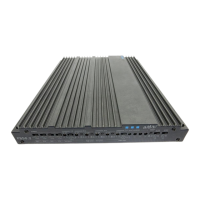table of contents
introduction 1
about this manual 2
features of your PowerPlate™ 2
warning and tips 3
mounting locations 3
system planning 4
system configurations 4-10
installation 11
controls and connections 11-12
signal sources 13-14
internal signal routing 14-15
multi-cross™ crossover and configurations 16-17
AC502 operation 18
tuning 18-19
P450.2 block diagram 20
P650.2 block diagram 21
P850.2 block diagram 22
troubleshooting 23-24
specifications 25
warranty information 26
introduction
Although it may be hard to remember, back in the 1970’s, car audio as we now know it didn’t really exist.
Sure, music lovers could buy a cassette or 8-track tape deck and some 6" x 9" three-way speakers.
Advanced stereo buffs might even add a "power-booster" to increase output too as much as 12 watts
RMS! But none of this really delivered the power to cut through road noise with sound quality that
compared with the best home audio. Not until 1979 that is, when a/d/s/ introduced the revolutionary
PowerPlate™ P100 amplifier and 300i 2-way plate loudspeakers. Aesthetically, the P100 introduced the
low profile design which has been an a/d/s/ trademark to this day. Technologically, the P100 combined a
high efficiency switching power supply with a state-of-the-art, discrete high-current stereo power
amplifier. For the first time, a car audio system existed with the musical integrity and dynamic range that
made you want to take long drives to nowhere, just to listen to the music. High quality car audio was
born, and the original a/d/s/ PowerPlate™ P100 made it happen.
The latest improvements to the PowerPlate™ line-up include increased heatsink area to facilitate higher
power output, and fully balanced high-level inputs compatible with any source. The amplifier you have
purchased is an enhancement of the respected P-series multichannel amplifiers. In this version, we have
improved upon the already acclaimed sound quality by addressing internal details, and upgrading selected
components to incorporate the latest technology which was not available when the P-series was originally
designed. Selected low-noise, high-speed op amps are used in critical circuits. Class-A biasing is used
throughout the voltage-gain and active crossover stages. Numerous modifications and "tweaks" were
also performed which improve the power supply dynamics and reduce noise. These changes improve
transparency and dynamic linearity, resulting in a smoother and more detailed top-end, tighter bass, more
explosive dynamic contrasts, and virtually holographic imaging. Left intact are the P-series unequalled
flexibility, high efficiency and superb reliability. These, along with multichannel design, are fundamental in
the a/d/s/ approach to systems engineering, which makes achieving true high fidelity reproduction simple
and predictable in any installation.
1

